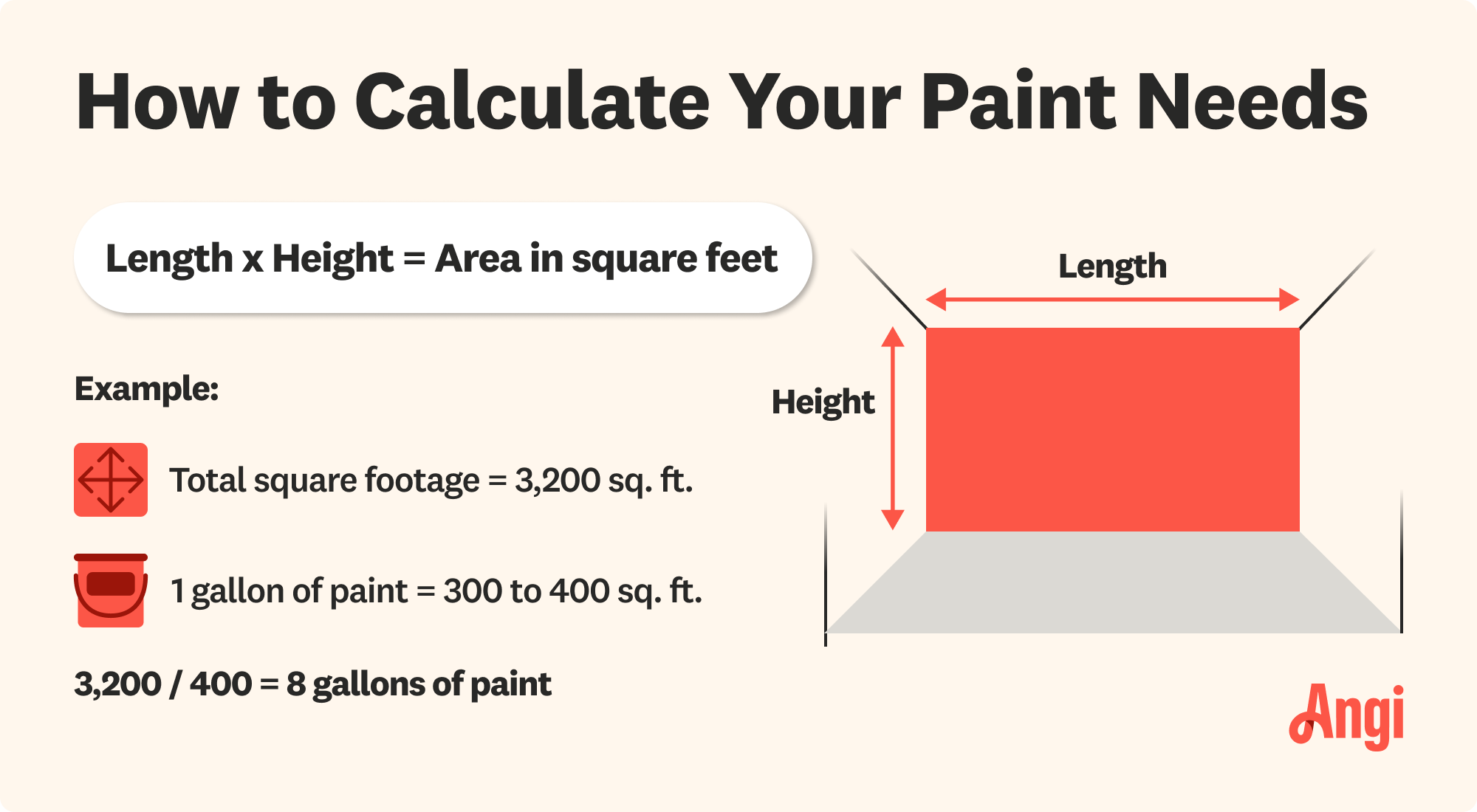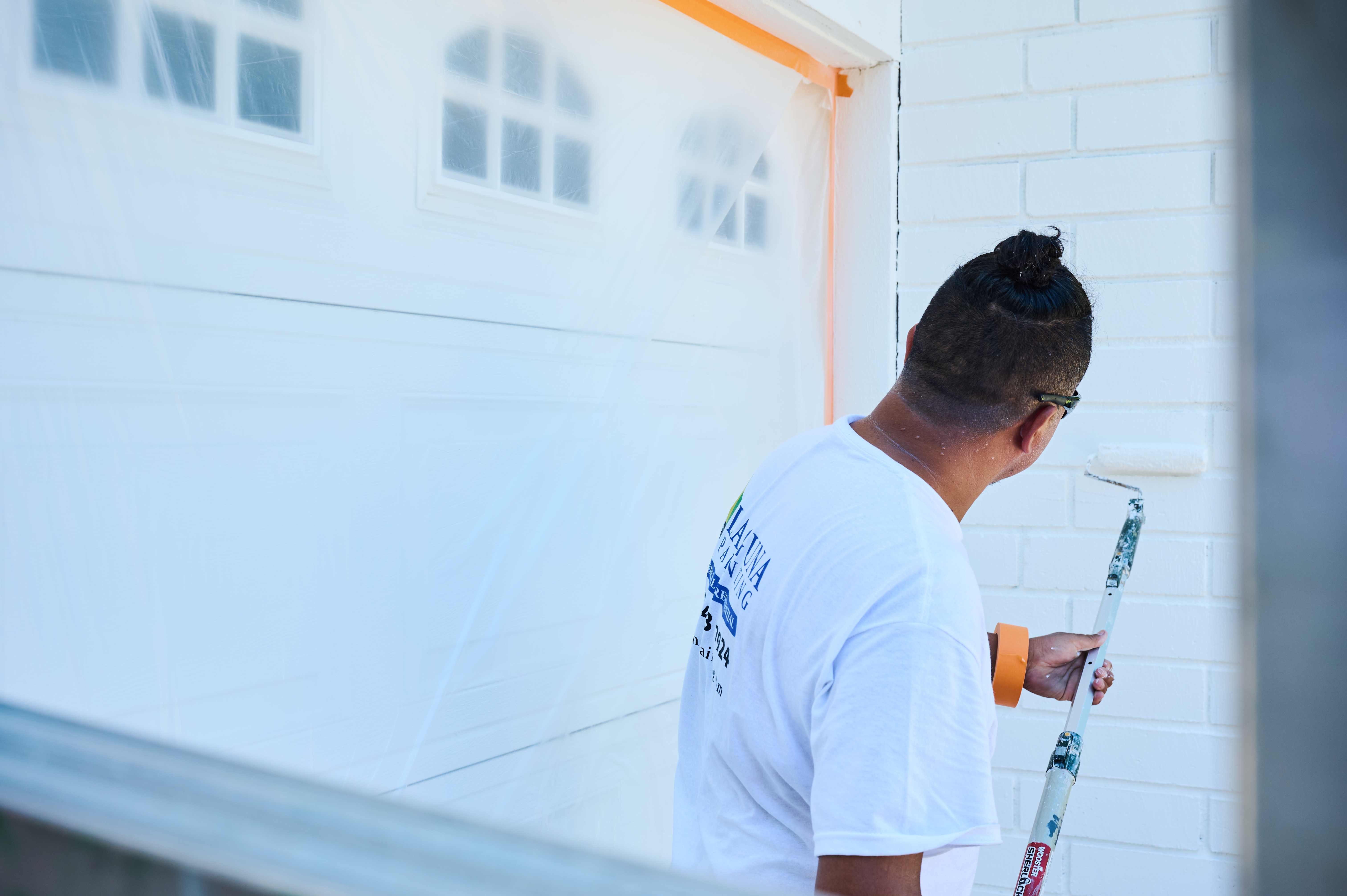
The price to paint your home’s baseboards depends on the square footage and whether you DIY the project. Learn more to budget for baseboard painting.
Interior painting costs depend on your project and location. Check with a local pro for your specific job.
The cost to paint the interior of a house in Indianapolis rises with home size, ranging from $2 to $6 per square foot, depending on layout and surface area.
Older Indianapolis homes often require plaster repair or sanding, adding $0.50 to $0.75 per square foot in prep costs.
High ceilings, detailed trim, or accent walls increase labor time and complexity, often raising total project costs by 20% to 30%.
Homeowners in Indianapolis, Indiana, should budget carefully when planning an interior painting project. The cost to paint the interior of a house in Indianapolis averages $1,693, with most projects ranging from $882 to $2,527. Many older Indy homes, especially in neighborhoods like Broad Ripple and Irvington, often need extra prep due to aging plaster or trim. Room size, ceiling height, and paint quality all influence pricing, so explore what you can expect to pay for this project below.
Understanding interior painting cost factors in Indianapolis, Indiana, helps explain where your budget goes, from how much paint you need to home size, paint type, ceiling height, architectural details, surface prep, texturing, wallpaper removal, and popcorn ceiling removal.

Across the country, the average cost to paint the interior of a house is $2.75 per square foot. If you include walls, trim, and ceilings, the cost per square foot is $4.70. To get the most accurate quote, have your square footage ready when speaking with a pro. For reference, an average room is 10-by-12 feet.
If you’re embarking on a whole-house interior painting project, check out the cost to paint a home interior by square footage, ranging from $2 to $6 per square foot:
| Square Footage | Average Cost |
|---|---|
| 500 | $1,000–$3,000 |
| 800 | $1,600–$5,000 |
| 1,000 | $2,000–$6,000 |
| 1,200 | $2,400–$7,000 |
| 2,300 | $4,600–$13,000 |
| 2,500 | $5,000–$14,000 |
| 3,000 | $6,000–$18,000 |
While browsing the paint aisle or speaking with your pro, you’ll probably notice that paint costs $15 to $40 per gallon, depending on the brand and paint finish. If you have your heart set on a specific brand or type of paint, it can quickly raise the price. Long-lasting, high-gloss, and stain-blocking or mold-resistant paint will cost more and can push up your material costs.
The average home needs six gallons of paint per coat, excluding primer, so keep that in mind before filling up your cart.
| Paint Type | Average Cost per Gallon |
|---|---|
| Primers | $20 |
| Flat paint | $25 |
| Semi-gloss interior paint | $35 |
| High-glass enamel paint | $45 |
| VOC-free paint | $50 |
Oil-based paints contain higher volatile organic compounds (VOCs) than latex paints. To limit your exposure to VOCs while painting indoors, keep the area well-ventilated, wear respiratory protection, and avoid the painted area for at least 72 hours once finished.
Painting costs vary for different surfaces. Whether you're planning to refresh your walls, revive your ceilings, or give your trim a new lease on life, knowing the average expenses per surface type can help you budget effectively. In addition to walls and ceilings, you may also choose to paint baseboards and trim or paint an accent wall.
Adding an accent wall increases your budget by 20% to 30% to cover the cost of additional paint and materials. Choosing to add an accent wall will also require additional taping and drying time, so the cost to paint an accent wall will sit higher than a wall that matches the others in your home.
| Surface | Average Cost |
|---|---|
| Baseboard and trim | $1–$4 per linear foot |
| Hard-to-reach areas | $5–$8 per sq. ft. |
| Smooth ceiling | $1–$3 per sq. ft. |
| Walls | $2–$4 per sq. ft. |
| Accent walls | $3–$7 per sq. ft. |
There are a few extra considerations to keep in mind when budgeting for interior painting, most of which focus on the existing features in your home.
If the interior of your home features unique architectural designs, such as archways or columns, painting these will affect the cost. Due to the complexity of the areas, the increase in cost is labor-focused, as it takes greater attention to detail to make them shine.
Another important thing to consider is your ceiling height. Walls under standard 8-foot ceilings will be the most affordable to paint, and they fall on the lower end of the cost to paint a ceiling range. Taller walls, especially those under cathedral ceilings, will often require scaffolding and additional safety equipment to paint. These can drive up your labor costs even beyond what the additional coverage will add.
If a wall requires sanding and patching, the cost for wall prep is between $0.50 and $0.75 per square foot. This prep work is vital for a smooth finish on your wall, so a pro can apply paint flawlessly.
Some paint contractors bundle the prep work into their hourly or per-square-foot charges. If a room requires drywall fixes before the paint can glide on, drywall repair costs can add an average of $600 to your budget, depending on the severity.
You may need to use a primer before painting your walls, especially if you’re painting over a dark shade with a light one. Paint primer helps the paint adhere more effectively, resulting in longer-lasting paint jobs and reducing how often you need to paint your home. Primer costs $10 per quart and covers 100 square feet with a single coat. Depending on your walls, you might need multiple coats of primer.
Adding textured walls to create a richer look can hide paint flaws and add some depth to your space, but prepare to increase your painting budget by up to 50% for this premium technique. Textured walls can require twice as much paint as smooth walls. Before hiring a professional painter, ensure that they offer this specialized service.
Removing wallpaper costs $3 per square foot. In a 12-by-12-foot room, expect to pay $535 to tear down wallpaper.
Expect to pay between $1 and $2 per square foot to de-pop a popcorn ceiling. Once your professional removes your popcorn ceiling, extra costs for texture, painting, or other refinishing options will add to the final total. Contact a popcorn ceiling removal pro near you for assistance.
Hiring painting pros in Indianapolis means factoring in labor rates, common add-ons like trim, ceilings, or accent walls, and seasonal timing, since choosing the best time of year to paint can influence scheduling, efficiency, and overall project costs.
Professional painters include the cost of labor in the total estimate, which often accounts for 75% to 95% of the total cost. While there’s no substitute for a professional paint job, you can cut down on labor costs by patching and prepping your walls so they’re ready for painting when the pros arrive. Professional interior painters in Indianapolis, Indiana, may charge higher labor rates for older homes with detailed trim, built-ins, or extensive plaster repair that requires additional time and precision.
While you’re budgeting for an interior refresh, you might want to consider the following add-on services to maximize the impact and increase home value even further.
Cost to replace light fixtures: $150 to $1,000
Cost to install crown molding: $600 to $2,100
Cost to refinish wood flooring: $1,100 to $2,700
Cost to replace interior doors: $360 to $1,200
Cost to replace windows: $3,400 to $11,700
Cost to replace kitchen cabinets: $2,000 to $11,000
The best time to paint in Indianapolis is from late May through early October, when warm, steady Midwestern weather helps paint cure smoothly. Indianapolis’s frequent spring rain and sharp winter temperature drops can slow drying, extend labor time, and raise project costs. Scheduling your interior painting during the city’s drier, more predictable months ensures better results and more efficient use of your budget.
A professionally executed interior paint job in Indianapolis can offer an impressive return on investment, and industry data suggests a 107% return on investment (ROI), meaning you may recoup more than you spend when you sell.Fresh, neutral paint enhances safety and efficiency by covering wear and creating a clean canvas, boosts functionality and universal design through updated surfaces, and improves aesthetics that attract buyers. In Indy’s competitive market, a well-chosen color scheme and quality execution can help your home stand out and sell faster.
Home is the most important place on earth, which is why Angi has helped more than 150 million homeowners transform their houses into homes they adore. To help homeowners with their next project, Angi provides readers with the most accurate cost data and upholds strict editorial standards. We survey real Angi customers about their project costs to develop the pricing data you see, so you can make the best decisions for you and your home. We pair this data with research from reputable sources, including the U.S. Bureau of Labor Statistics, academic journals, market studies, and interviews with industry experts—all to ensure our prices reflect real-world projects.
Want to help us improve our cost data? Send us a recent project quote to [email protected]. Quotes and personal information will not be shared publicly.
From average costs to expert advice, get all the answers you need to get your job done.

The price to paint your home’s baseboards depends on the square footage and whether you DIY the project. Learn more to budget for baseboard painting.

A new coat of paint can transform your bathroom and improve home value. Learn about the cost to paint a bathroom and what factors affect the total.

Refinishing stairs is a great way to spruce up one of a home's most dominant focal points. High-quality wood should be allowed to shine. Learn the cost to refinish stairs in this guide.

You can paint over plaster walls, but you’ll need to properly prep the surface first. Learn how to paint over plaster for a smooth, lasting finish.

Painting can be a tedious job, but it all comes down to the tools you use. Learn whether it’s better to use a paint sprayer or roller to get the job done.

From stone, tile, wallpaper, or paint, discover different accent wall ideas for your space.